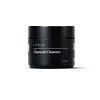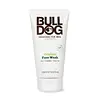What's inside
What's inside
 Key Ingredients
Key Ingredients

No key ingredients
 Benefits
Benefits

 Concerns
Concerns

 Ingredients Side-by-side
Ingredients Side-by-side

Water
Skin ConditioningMyristic Acid
CleansingButylene Glycol
HumectantStearic Acid
CleansingPotassium Hydroxide
BufferingGlycerin
Humectant1,2-Hexanediol
Skin ConditioningCocamide Mea
EmulsifyingCharcoal Powder
AbrasivePotassium Cocoyl Glycinate
Potassium Cocoate
EmulsifyingButyrospermum Parkii Butter
Skin ConditioningSorbitan Olivate
EmulsifyingCitrus Aurantium Bergamia Fruit Oil
MaskingPelargonium Graveolens Flower Oil
MaskingLavandula Angustifolia Oil
MaskingCitrus Medica Peel Oil
Rose Flower Oil
MaskingSantalum Album Oil
MaskingCymbopogon Martini Oil
MaskingBHT
AntioxidantDisodium EDTA
Centella Asiatica Extract
CleansingPolygonum Cuspidatum Root Extract
AntioxidantScutellaria Baicalensis Root Extract
AstringentCamellia Sinensis Leaf Extract
AntimicrobialGlycyrrhiza Glabra Root Extract
BleachingChamomilla Recutita Flower Extract
MaskingRosmarinus Officinalis Leaf Extract
AntimicrobialWater, Myristic Acid, Butylene Glycol, Stearic Acid, Potassium Hydroxide, Glycerin, 1,2-Hexanediol, Cocamide Mea, Charcoal Powder, Potassium Cocoyl Glycinate, Potassium Cocoate, Butyrospermum Parkii Butter, Sorbitan Olivate, Citrus Aurantium Bergamia Fruit Oil, Pelargonium Graveolens Flower Oil, Lavandula Angustifolia Oil, Citrus Medica Peel Oil, Rose Flower Oil, Santalum Album Oil, Cymbopogon Martini Oil, BHT, Disodium EDTA, Centella Asiatica Extract, Polygonum Cuspidatum Root Extract, Scutellaria Baicalensis Root Extract, Camellia Sinensis Leaf Extract, Glycyrrhiza Glabra Root Extract, Chamomilla Recutita Flower Extract, Rosmarinus Officinalis Leaf Extract
Ingredients Explained
These ingredients are found in both products.
Ingredients higher up in an ingredient list are typically present in a larger amount.
Glycerin is already naturally found in your skin. It helps moisturize and protect your skin.
A study from 2016 found glycerin to be more effective as a humectant than AHAs and hyaluronic acid.
As a humectant, it helps the skin stay hydrated by pulling moisture to your skin. The low molecular weight of glycerin allows it to pull moisture into the deeper layers of your skin.
Hydrated skin improves your skin barrier; Your skin barrier helps protect against irritants and bacteria.
Glycerin has also been found to have antimicrobial and antiviral properties. Due to these properties, glycerin is often used in wound and burn treatments.
In cosmetics, glycerin is usually derived from plants such as soybean or palm. However, it can also be sourced from animals, such as tallow or animal fat.
This ingredient is organic, colorless, odorless, and non-toxic.
Glycerin is the name for this ingredient in American English. British English uses Glycerol/Glycerine.
Learn more about GlycerinWater. It's the most common cosmetic ingredient of all. You'll usually see it at the top of ingredient lists, meaning that it makes up the largest part of the product.
So why is it so popular? Water most often acts as a solvent - this means that it helps dissolve other ingredients into the formulation.
You'll also recognize water as that liquid we all need to stay alive. If you see this, drink a glass of water. Stay hydrated!
Learn more about Water